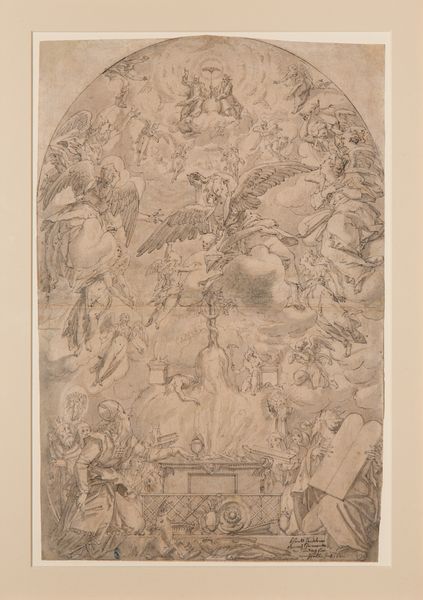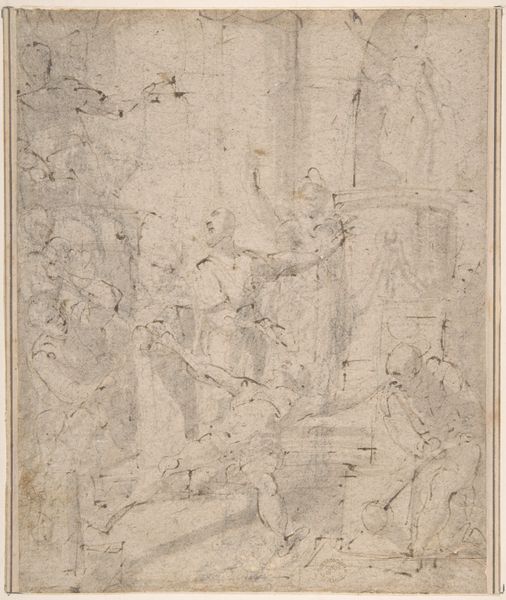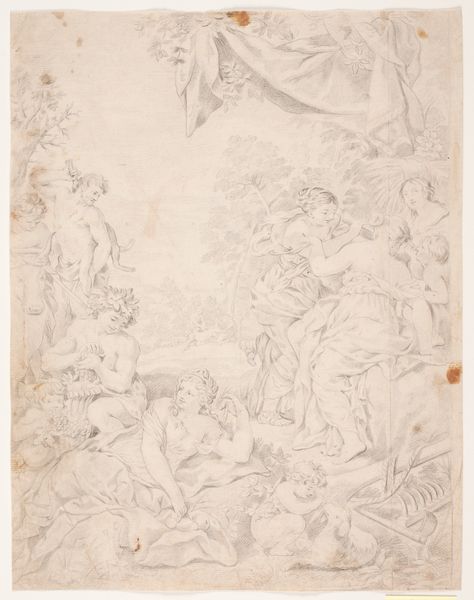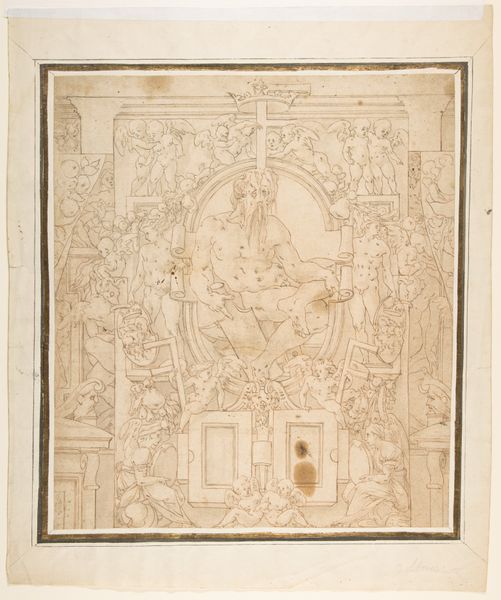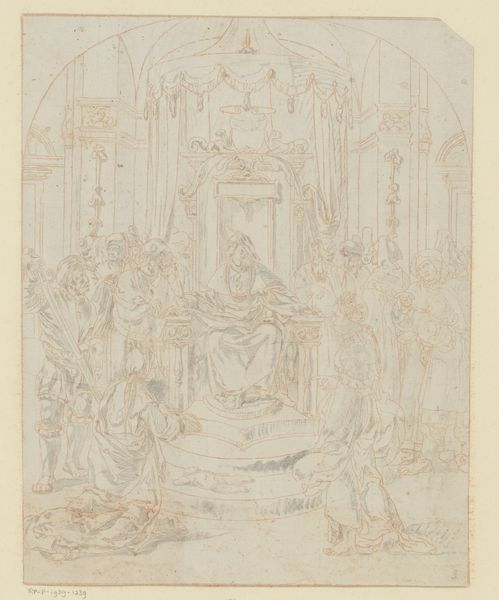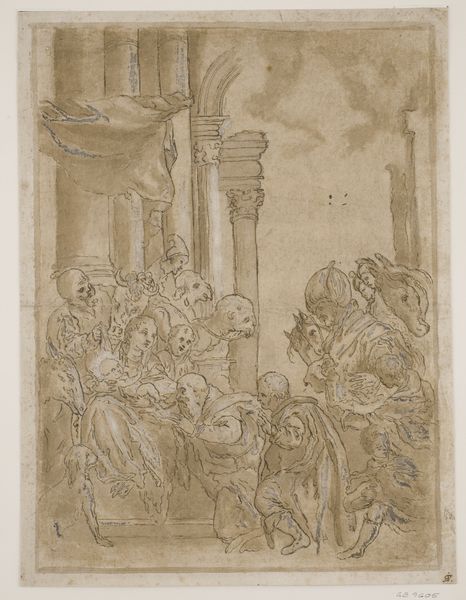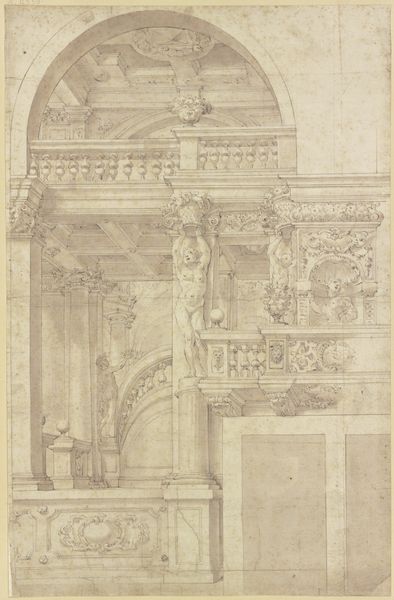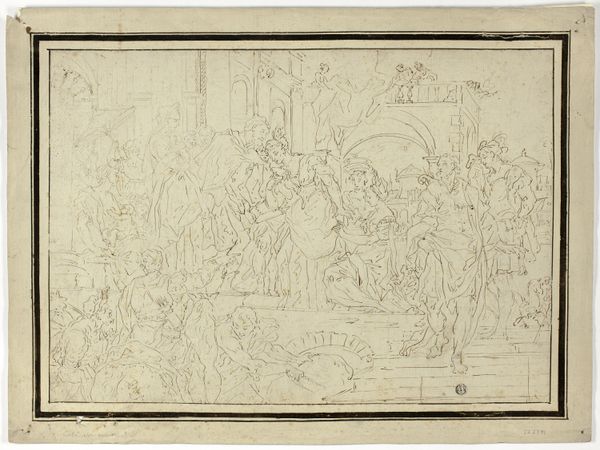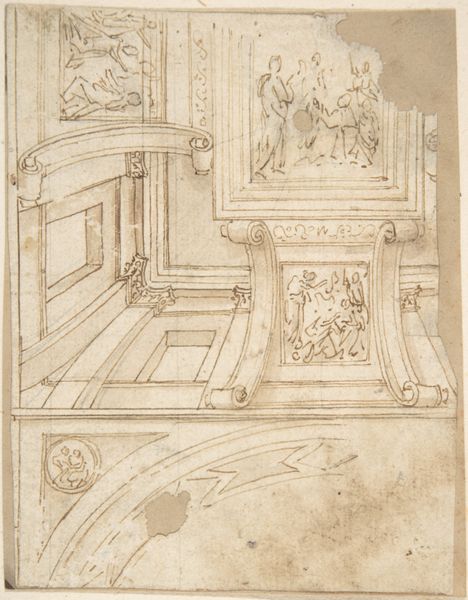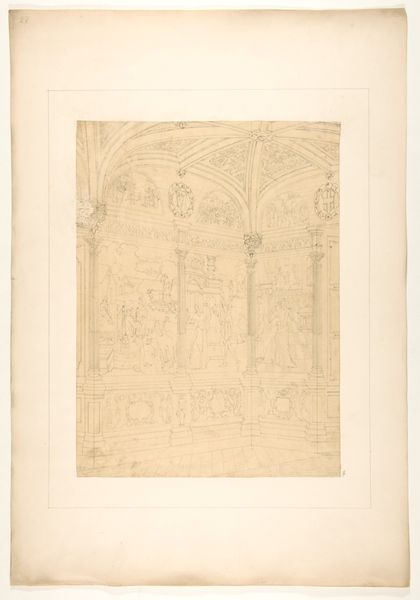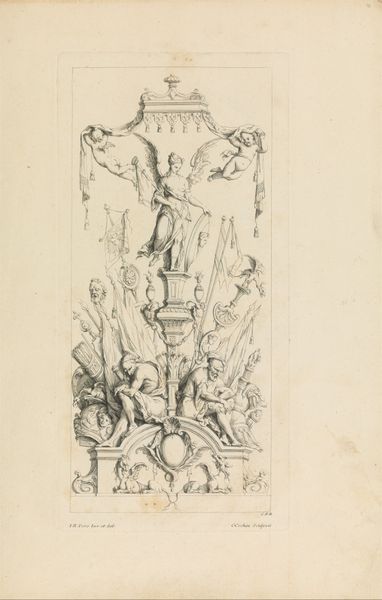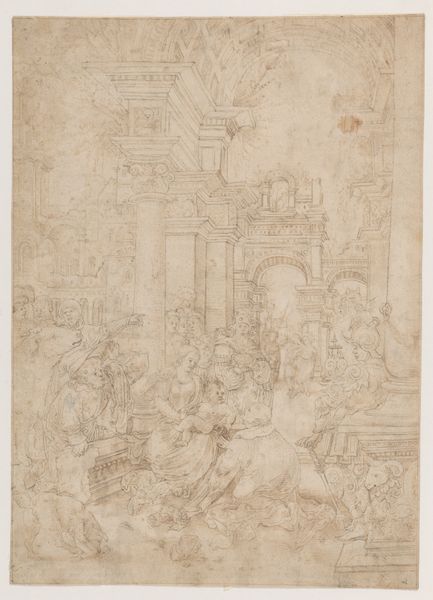
Project for a Rectangular Ceiling with Papal Coat of Arms (recto); Design for a Courtyard (verso) 1558 - 1601
0:00
0:00
drawing, print, pencil
#
drawing
# print
#
pencil sketch
#
human-figures
#
etching
#
figuration
#
11_renaissance
#
pencil
#
history-painting
#
academic-art
#
italian-renaissance
Dimensions: 15 5/16 × 20 15/16 in. (38.9 × 53.2 cm)
Copyright: Public Domain
Curator: This meticulous drawing, rendered in pencil and etching, presents us with Giovanni Alberti’s "Project for a Rectangular Ceiling with Papal Coat of Arms," created sometime between 1558 and 1601. Currently, this work on paper is housed at the Metropolitan Museum of Art. Editor: Immediately, I'm struck by the sheer intricacy and layered detail. It gives me a feeling of almost overwhelming ornamentation, like I'm gazing upwards into some impossible architectural space. Curator: The artist is envisioning a space designed to evoke prestige. We see evidence of the papal coat of arms meant to confer power and perhaps also divine sanction on the room's occupant and purpose. These heraldic devices visually connected the space and anyone occupying it to the vast cultural memory and legacy of the Catholic Church. Editor: The sheer volume of embellishment, particularly the cartouches and figurative elements feels significant, doesn’t it? Almost to the point where it detracts from the structural integrity of the architecture itself. It suggests a shift away from the Renaissance's earlier ideals of simplicity. Curator: Indeed. This decorative exuberance serves to reinforce the importance of ceremony and the display of power through visual messaging. Those angelic figures you see represent virtues but are, themselves, being marshalled to support a political agenda and remind its audience of a rigid hierarchy. Editor: I notice the artist alternates between more rigid orthogonal forms, for the architecture and these wildly swirling curves in the figurative elements. What effect does this contrast likely achieve? Curator: That deliberate tension highlights a period of cultural change, doesn't it? The academic tradition emphasized order, while a dynamic tension with the natural world invited emotional impact. It speaks of both reverence and perhaps the burgeoning unease around established dogma during this period of questioning. Editor: It’s as if the formal architecture is weighed down by this abundance of organic form—almost collapsing under the weight. The shading creates almost another level of architectural forms on top. Curator: It’s interesting to contemplate the weight this image once carried as a design and symbolic articulation of an actual space; now that charge has shifted again simply by existing within the context of a museum, so far removed from that original intention and purpose. Editor: It invites a renewed appreciation for Alberti’s technique but also provokes questions regarding artistic license, representation, and ultimately, the symbolic vocabulary of power.
Comments
No comments
Be the first to comment and join the conversation on the ultimate creative platform.
